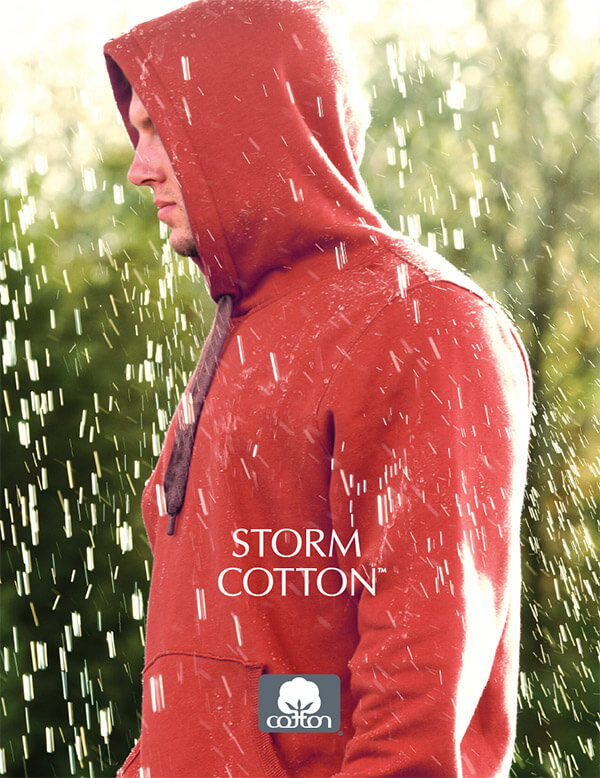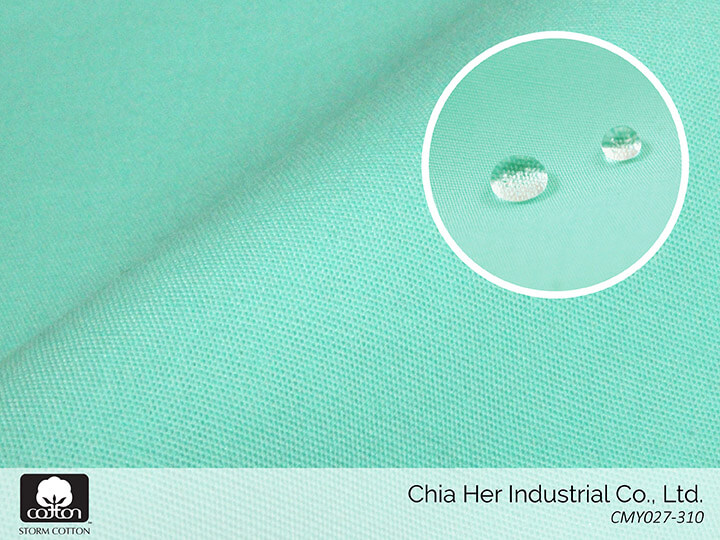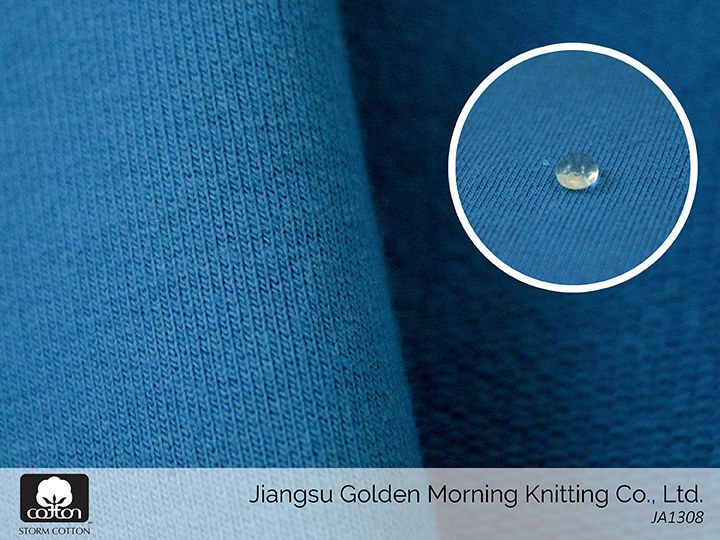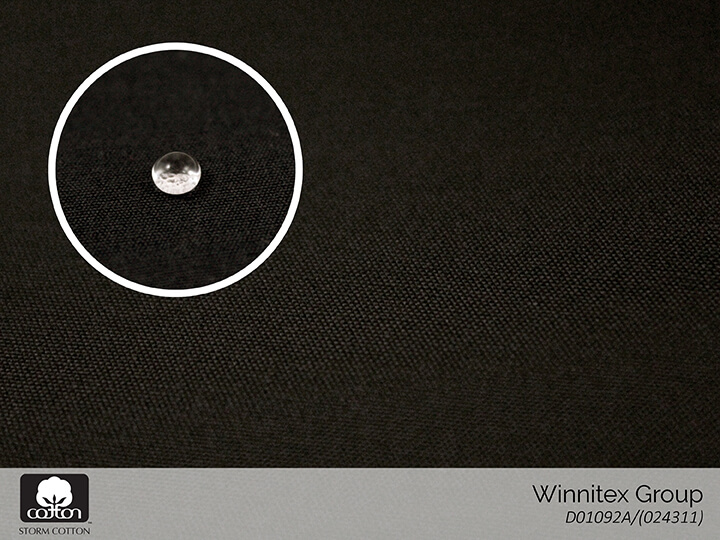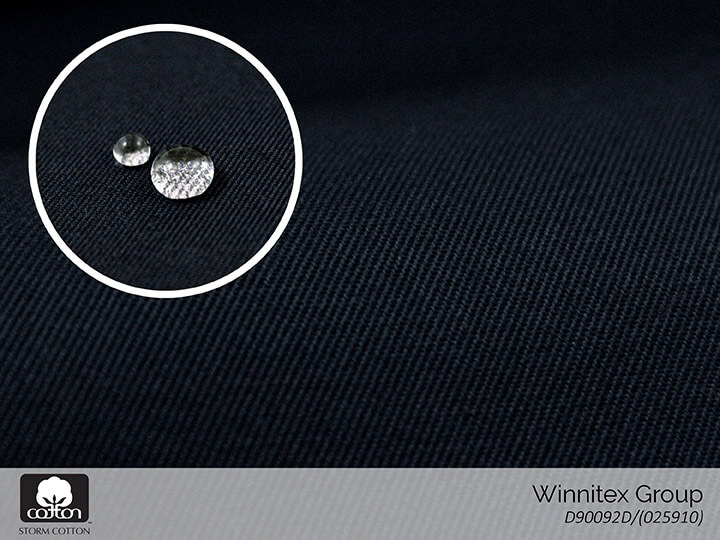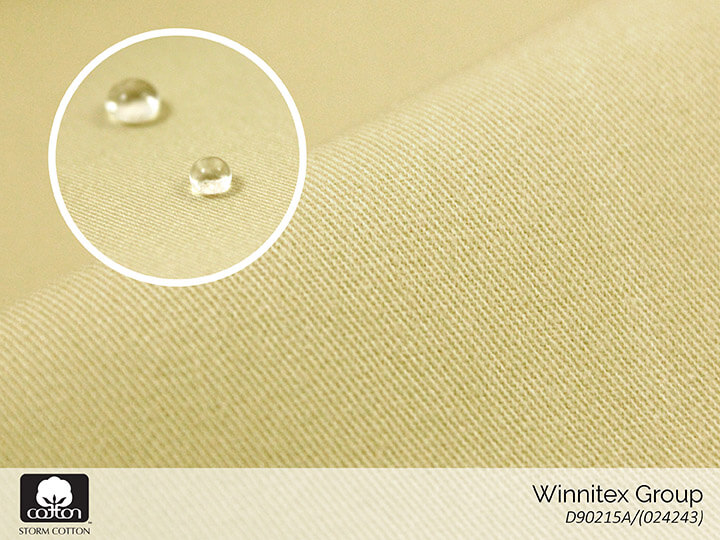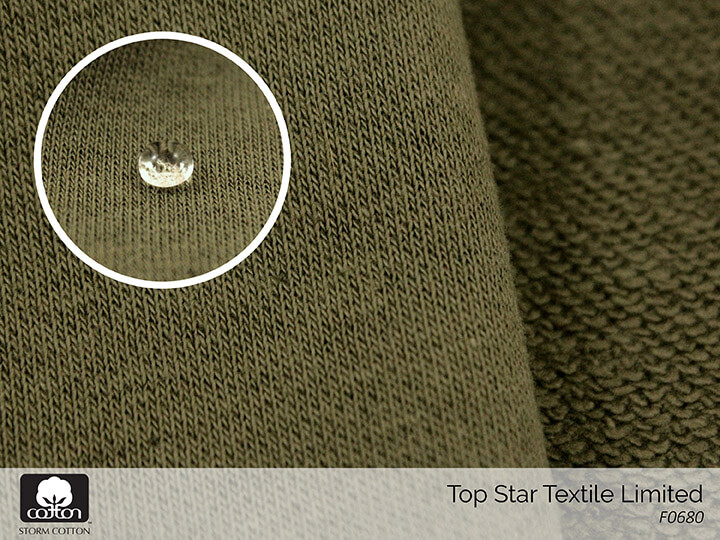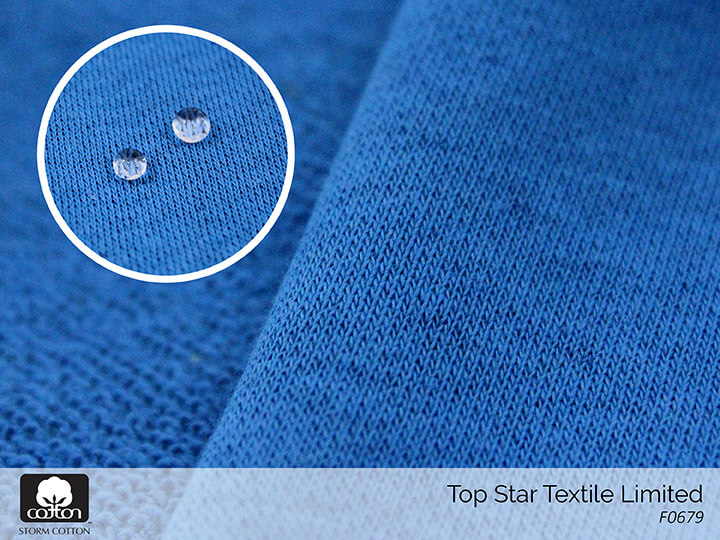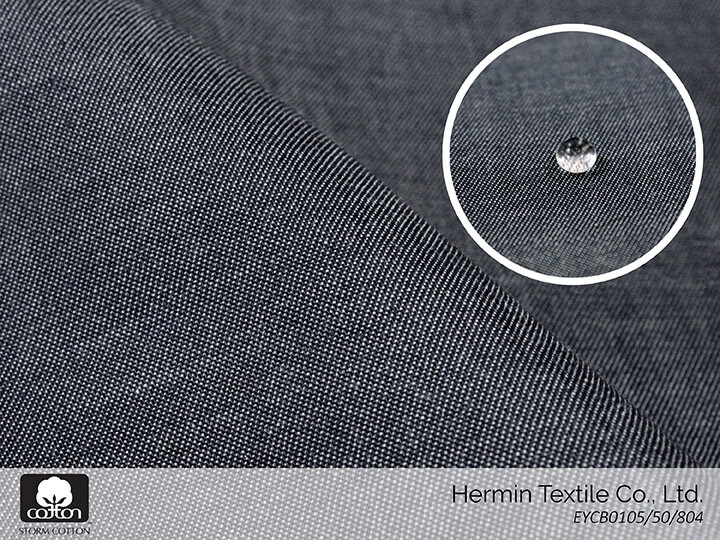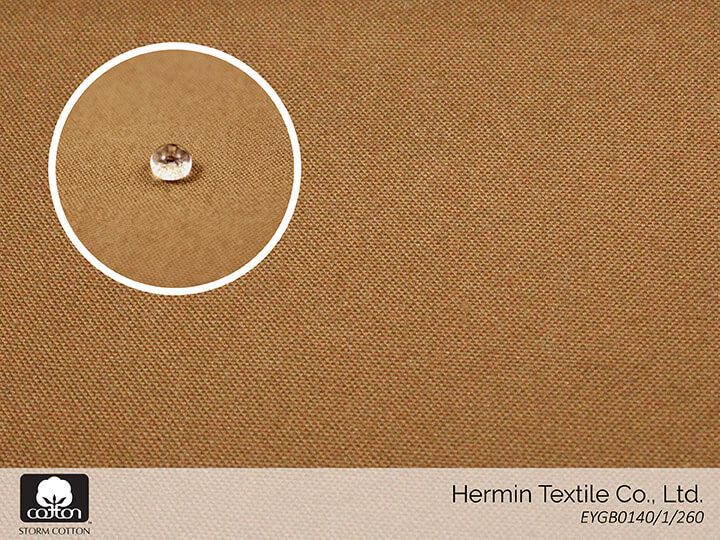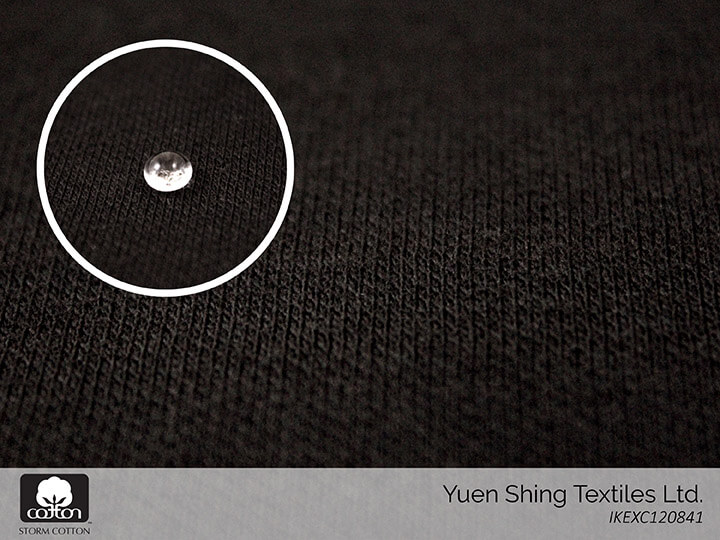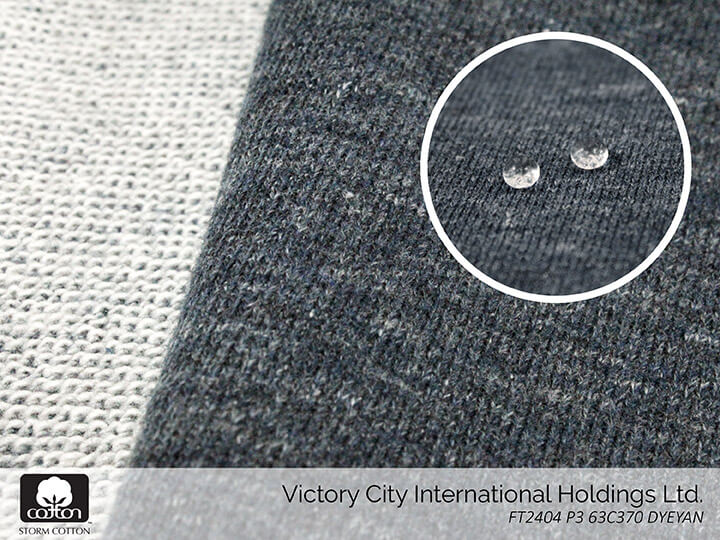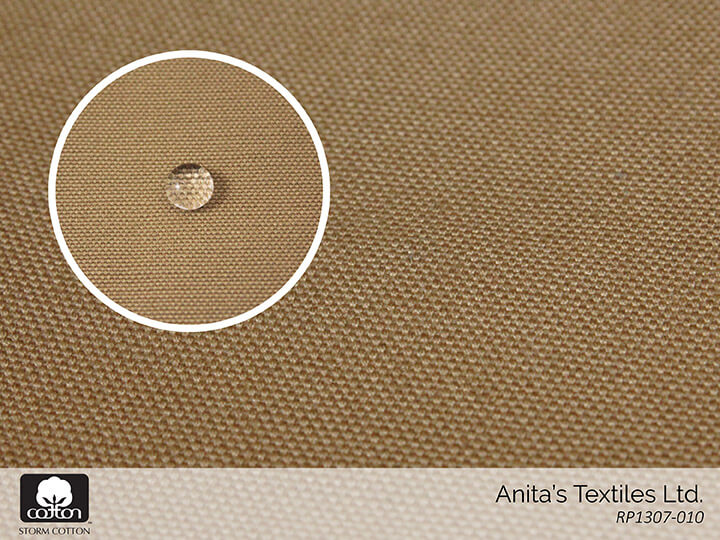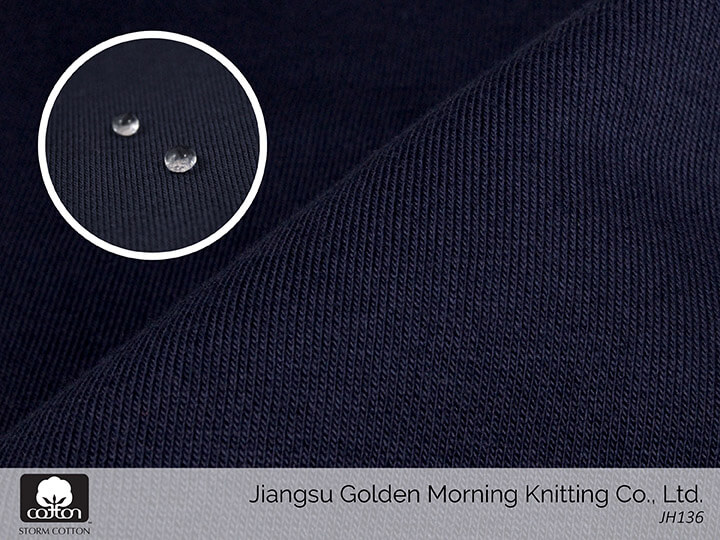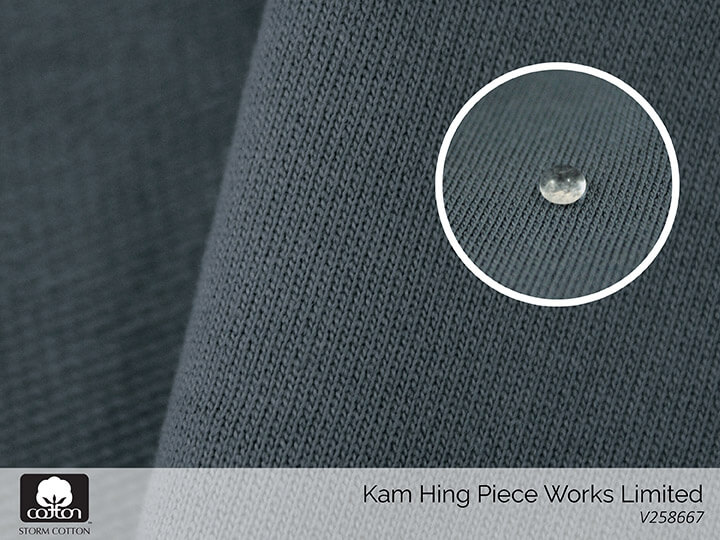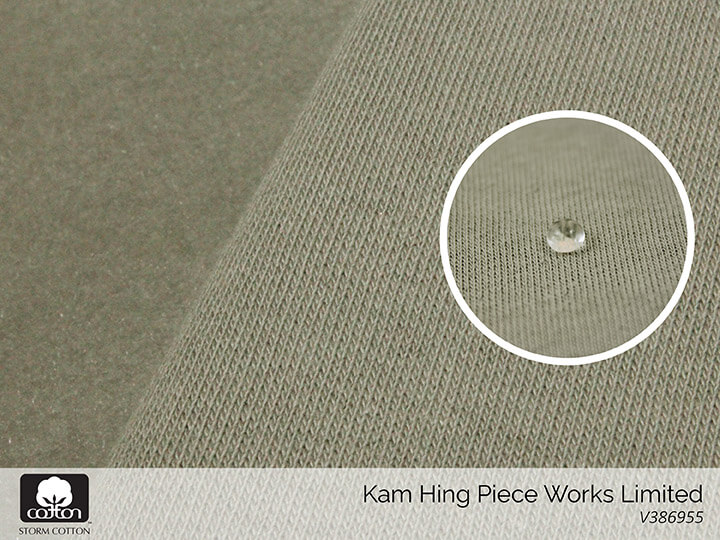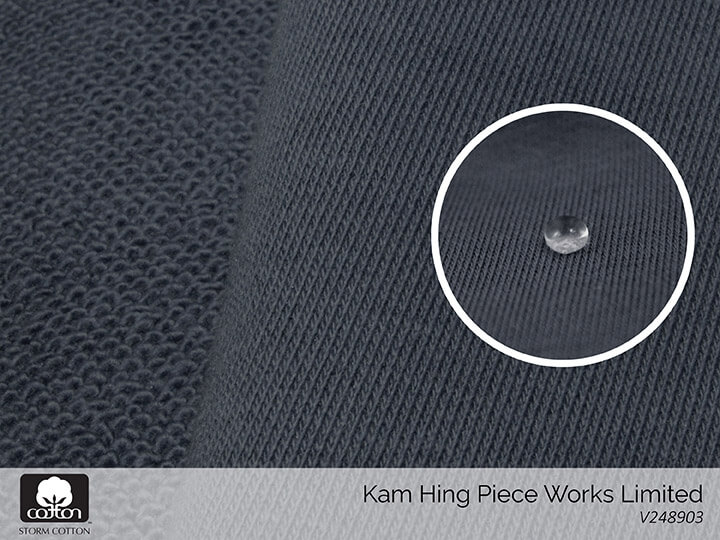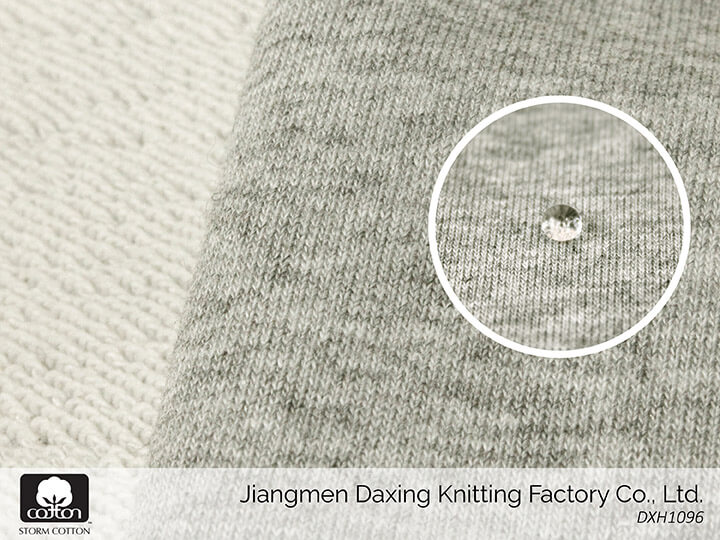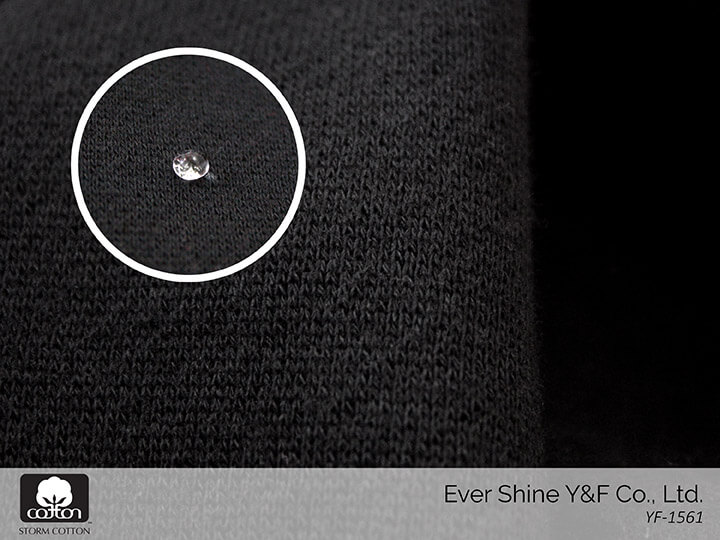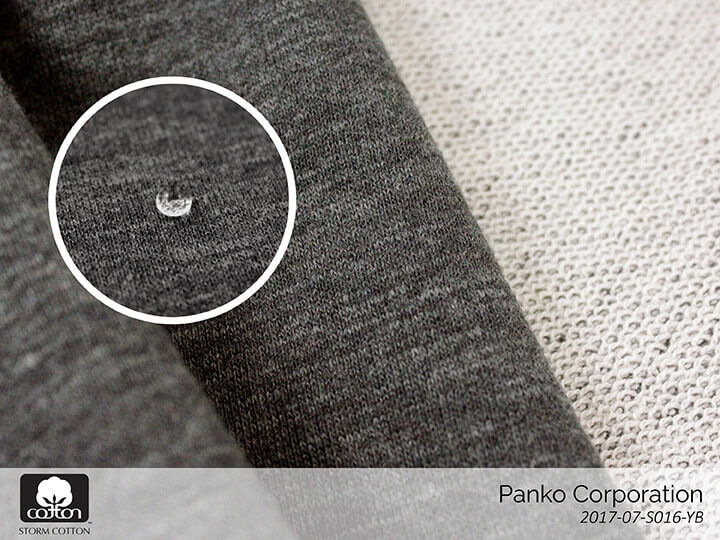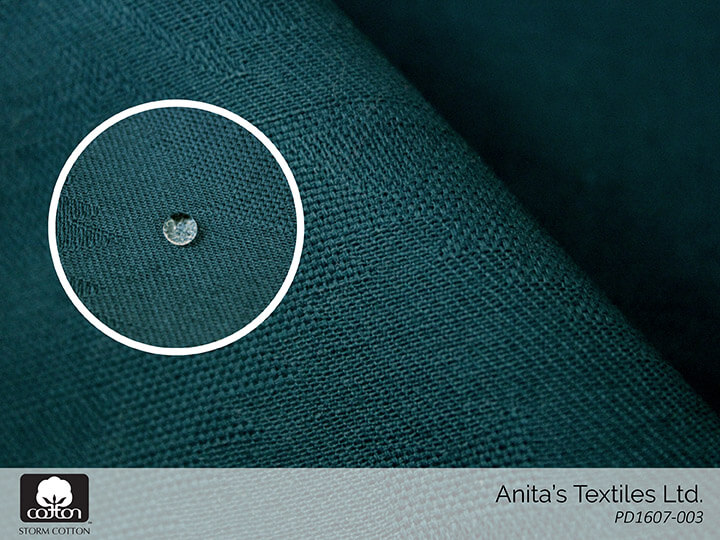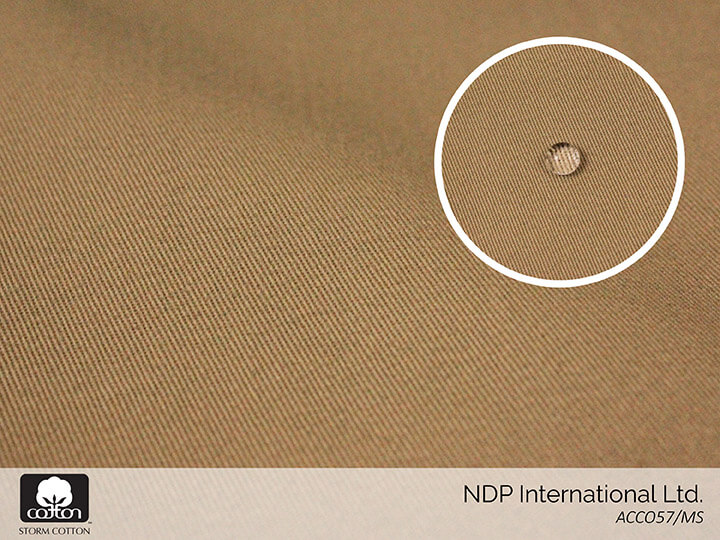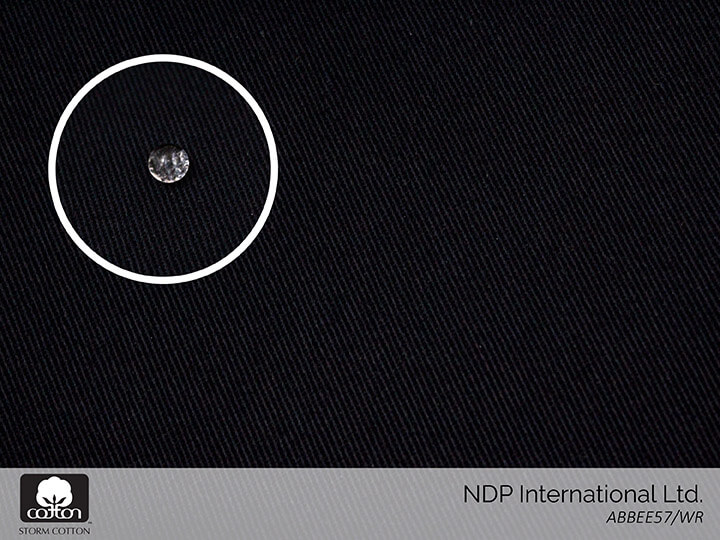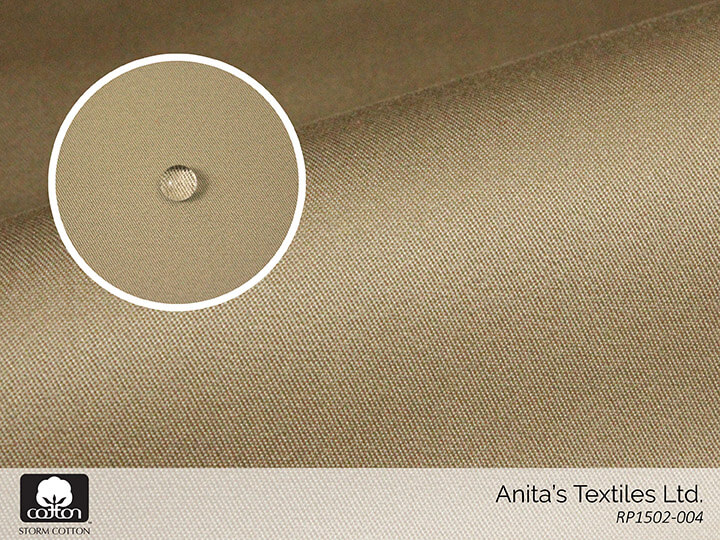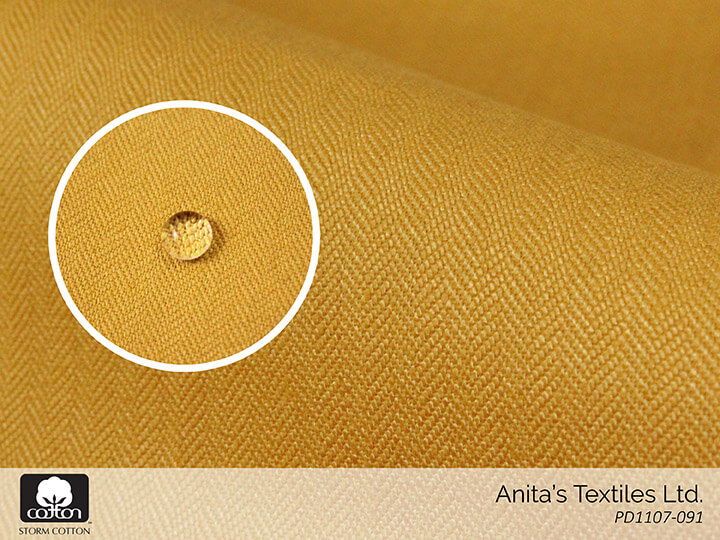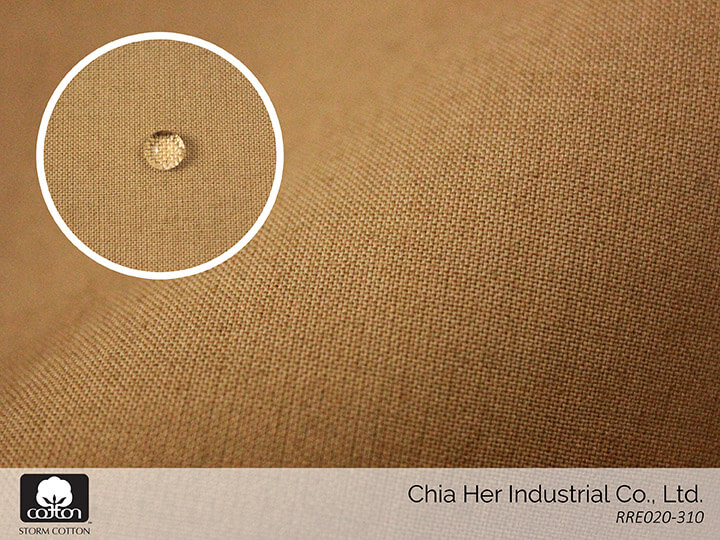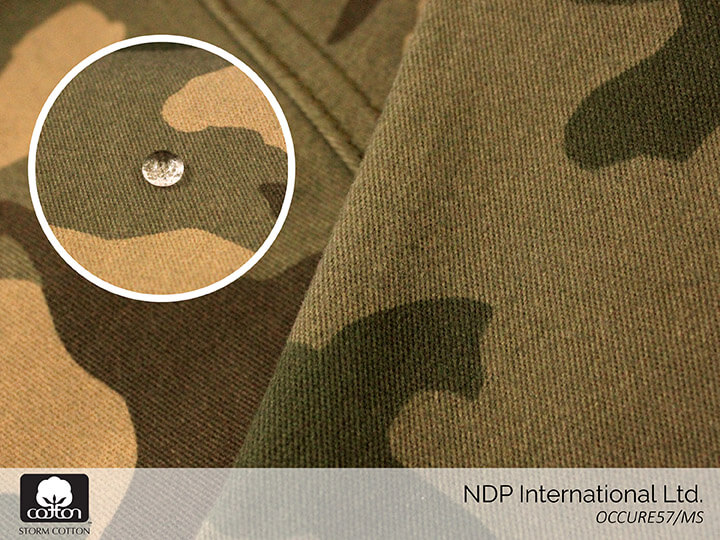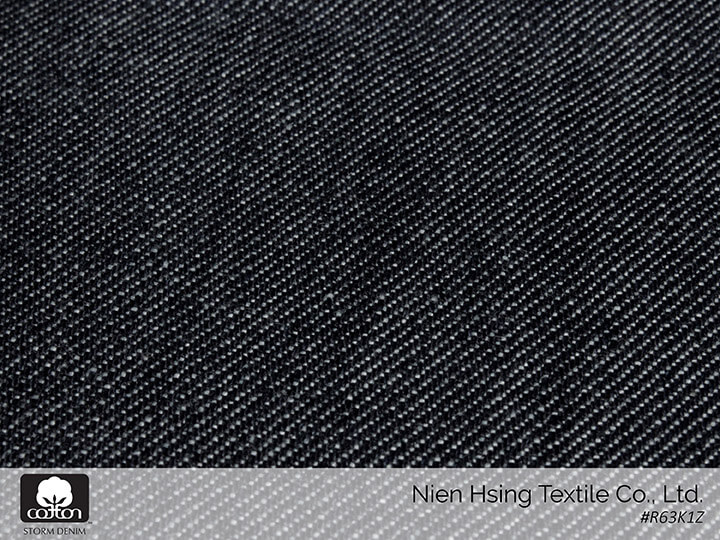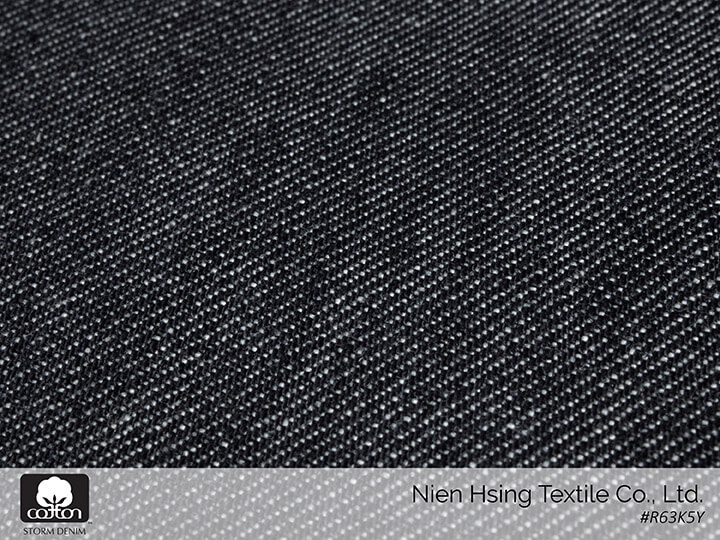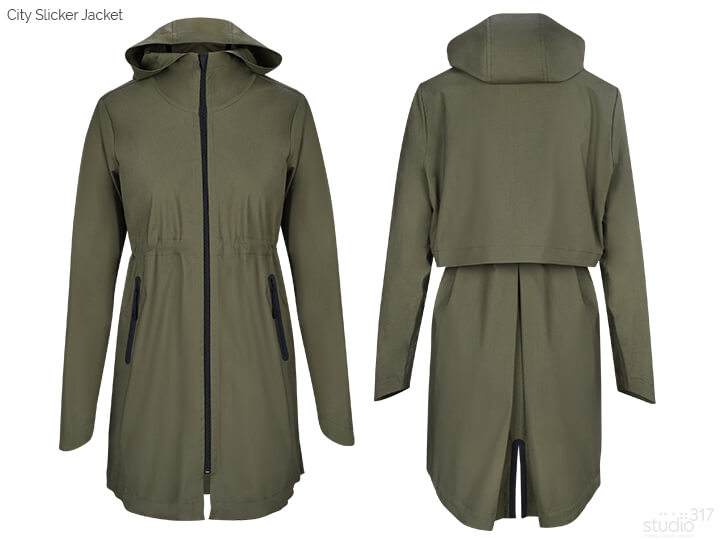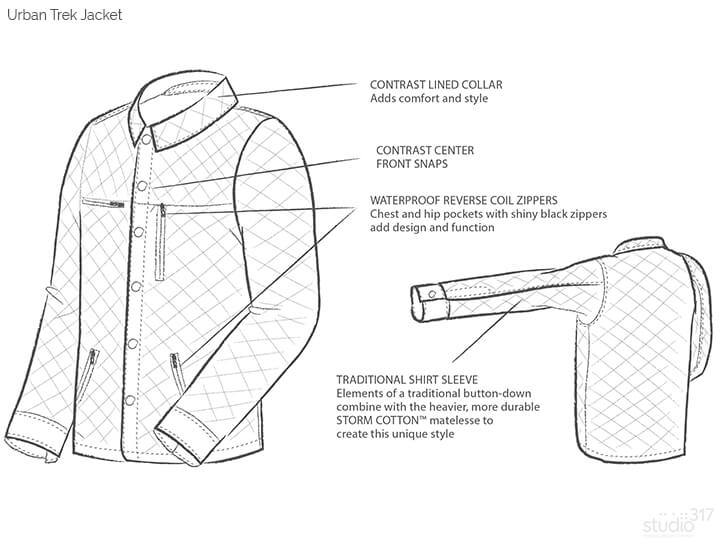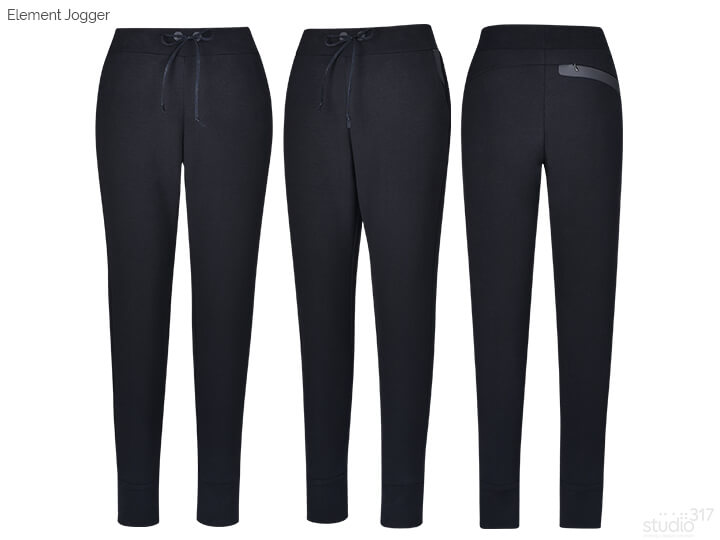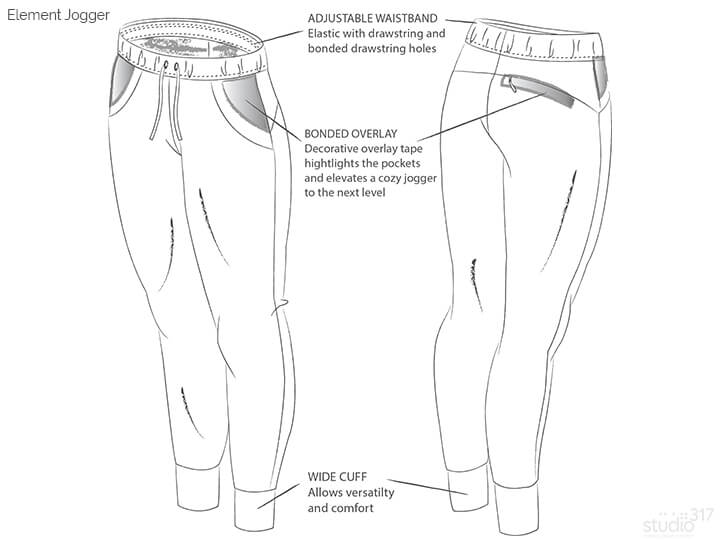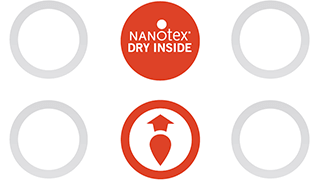STORM COTTON™ Technology
BREATHABLE PERFORMANCE THAT KEEPS YOU DRY.
Designed to repel moisture, STORM COTTON™ technology is a durable water repellent (DWR) finish for any cotton garment that can outlast other standard finishes.
Whether you’re exploring your favorite hiking trails or canoeing down a river, STORM COTTON™ technology will keep you comfortable, cool, and dry. You shouldn’t have to worry about your clothes performing so get outside and play—cotton can handle your favorite adventures, rain or shine.
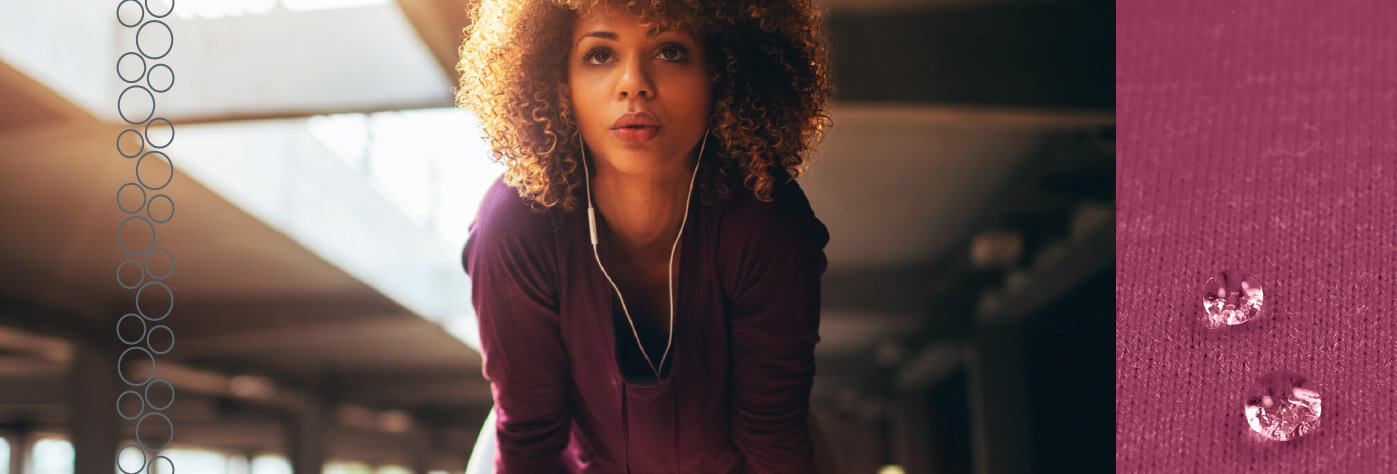
PROTECTION THAT’S PROVEN TO LAST.
What is STORM COTTON™ Technology?
STORM COTTON™ technology is a water repellent finish for cotton that offers protection from rain and snow while maintaining the natural comfort and breathability of cotton. The STORM COTTON™ finish gives improved performance over other durable water repellent treatments by maintaining excellent repellency performance throughout the life of the garment. The STORM COTTON™ finish can be applied in fabric or garment form to knits and wovens, including denim.
- Knits
- Wovens
- Denim
- Home Textiles
- Sweaters
- Fleeces
- Outerwear
Water Repellent Technology That Breathes Better Than Standard DWRs
- Repels moisture from the surface of the fabric
- Maintains the natural comfort and breathability of cotton
- Dries faster than untreated cotton
- Lasts the life of the garment
- Meets supply chain needs with clean chemistry options

Proven Performance
STORM COTTON™ technology is durable throughout the life of the garment, unlike competing DWR finishes. The spray repellency test measures the resistance of fabrics to wetting by water. Even after 30 home launderings, the STORM COTTON™ finish remains on the fabric, unlike other DWR finishes.
Many water repellent treatments inhibit a fabric’s ability to breathe and transfer moisture vapor effectively. That’s what is so great about cotton. STORM COTTON™ technology does not affect the natural ability of cotton fabrics to breathe and keep you cool.
Although it repels liquids, the finish still allows moisture vapor to pass through the fabric where it can dissipate into the environment, naturally keeping you more comfortable. Don’t take our word for it. Standardized test methods prove the point.
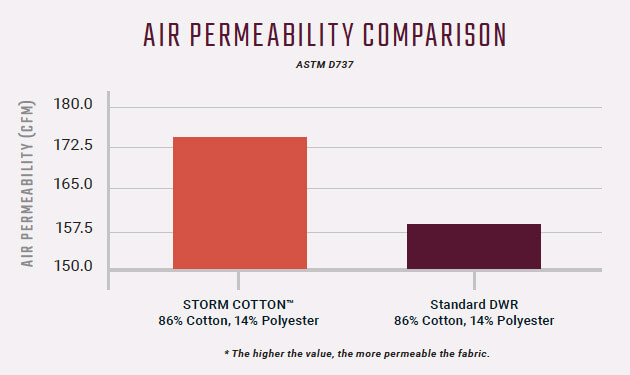
Versatile Application
STORM COTTON™ technology can be applied in both fabric form and garment form. The fabric application process is done by padding the finish onto the fabric, drying the fabric, and curing with the necessary time and temperature to achieve the highest level of performance. In garment form, the finish is applied through garment dipping or by metered spray application in a garment machine. The garments are then cured at the necessary time and temperature. The finish is versatile and can be applied to best meet the needs of your supply chain with suppliers all around the world.
What Consumers Are Saying1,2
- 67% say performance features are important in their clothing purchase decisions
- 59% say they are likely to seek out water repellent technologies when shopping for activewear
- 50% are willing to pay more for water repellent apparel
JEANS FOR EVERY ADVENTURE.
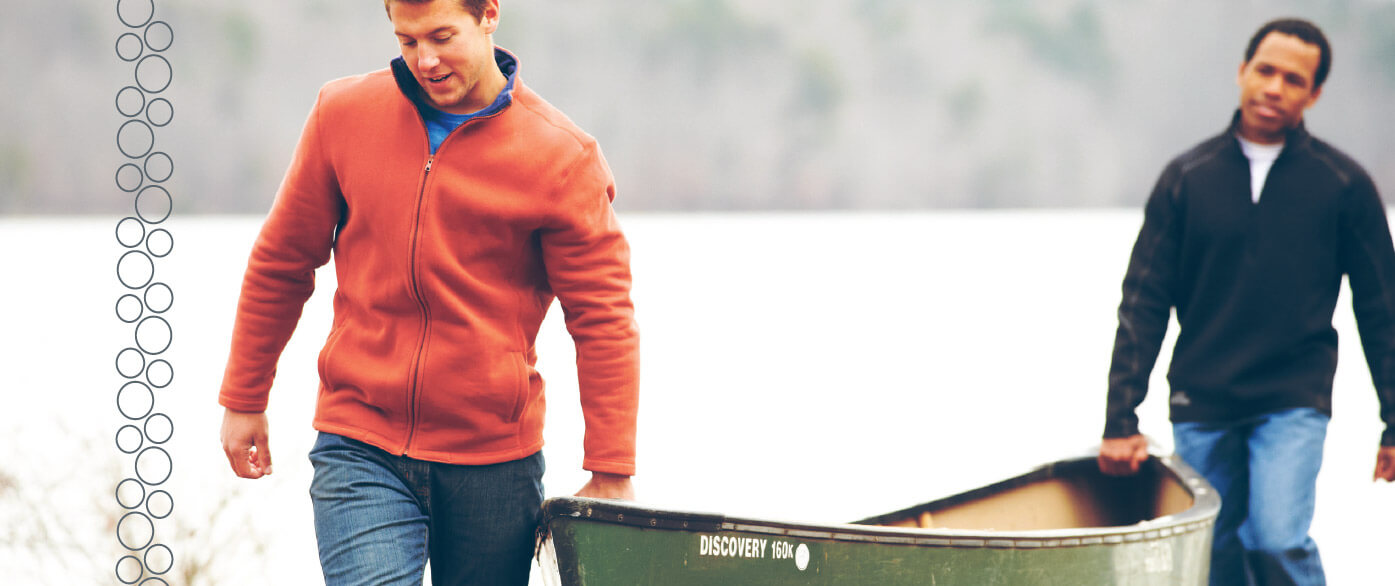
STORM COTTON™ Technology + Denim
The STORM COTTON™ technology recipe and finishing steps are tailored specifically for denim to achieve optimal performance. Denim is more prevalent than ever—from hiking, casual wear, skating, biking, traveling to working on the job site, consumers are wearing their favorite pair of jeans anywhere and everywhere. Savvy consumers expect more from their denim and the STORM COTTON™ technology elevates performance while keeping the look and feel that consumers love about their jeans. With STORM COTTON™ technology, there’s no limit to what your favorite jeans can do.
Engineered Specifically for Denim
The STORM COTTON™ finish is primarily applied in garment form. The finish can be applied to open-width fabric, but the most common application is either through garment dipping or metered spray application. This allows for greater flexibility to apply various garment finishing techniques to achieve the desired styling and appearance of the finished product. The garments are cured after the finish has been applied in order to help set the finish into the fabric.
STORM COTTON™ technology can be combined with antimicrobial agents to keep your jeans fresh and clean with each wear.
Long-Lasting Performance
The STORM COTTON™ technology outperforms a standard DWR finish when tested for spray repellency and are both proven to last the life of the garment. The spray repellency test measures the resistance of fabrics to wetting by water.
Up to 100% improved durability to laundering after 30 washes.
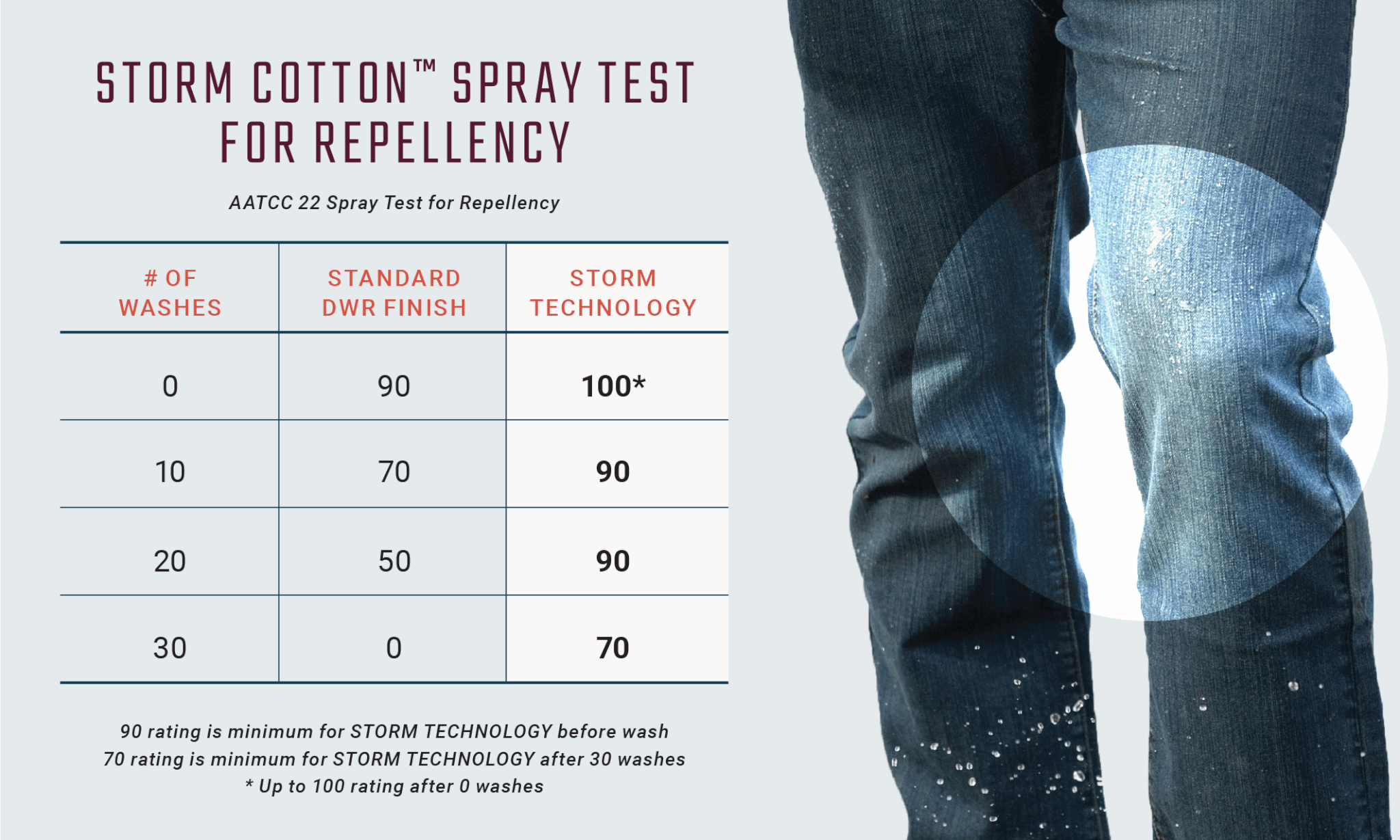
NATURAL PERFORMANCE.
A Sustainable Solution.
Proven performance doesn’t have to harm the environment. Consumers already know cotton is the best fiber choice for the environment—91% of consumers consider cotton to be the safest compared to 45% of consumers who believe polyester is safest.1
With the ever-growing challenge of microplastic pollution, your clothing shouldn’t pose a threat to our earth or our oceans.3 Cotton fiber biodegrades in soil and wastewater at a much faster rate than polyester.4,5 Cotton is known for its quality and durability, but in the laundry and at the end of life, you can feel better about that cotton garment and its effects on the environment. Your clothes should love the great outdoors as much as you do.
Cotton degrades 99% more than recycled polyester after 84 days in a compost environment.4
Cotton degrades 95% more than polyester after 250 days in wastewater.5

CLEAN CHEMISTRY.
Many water repellent chemistries contain fluorinated compounds to repel moisture and the finish formulas contain perfluorooctanoic acid, or PFOA. The U.S. Environmental Protection Agency (EPA) has investigated issues concerning PFOA and fluorochemicals and there has been interest in finding alternatives to PFOA.6 The standard perfluorinated molecules contain an 8-carbon chain structure (C8) that does not break down quickly in the environment.
The STORM COTTON™ technology provides an alternative to the C8 chemistry: a shorter carbon chain structure (C6) finish and fluorocarbon-free finish. Performance is not sacrificed and spray repellency ratings are still able to be met while providing a sustainable industry solution for a durable water repellency finish.
STORM COTTON™
technology is
96% biobased
certified by the
USDA BioPreferred®
Program
GLOBAL AVAILABILITY.
We Can Engineer A Solution For You
STORM COTTON™ technology was developed by Cotton Incorporated. We work with suppliers around the world to implement the technology within existing supply chains and we make it easy for brands and retailers to use the technology on cotton products.
Marketing resources available for use and inspiration:
- Hangtags and other point-of-sale collateral
- Knit and woven fabric developments
- Licensed technology logo on products that meet fabric performance criteria
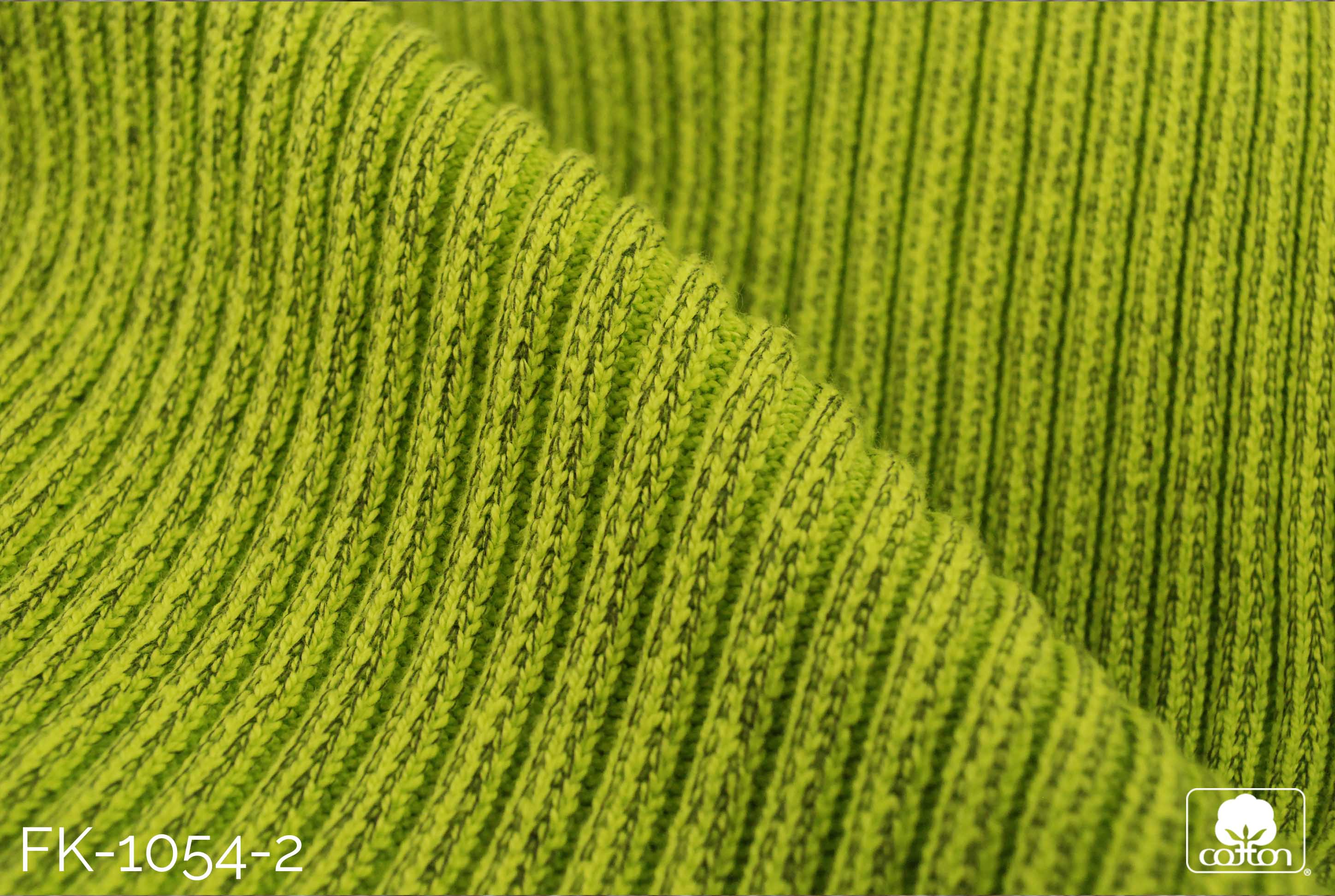
STORM COTTON™ and TOUGH COTTON™ Technologies

FABRIC INSPIRATION.
Here are a few examples of STORM COTTON™ technology from Cotton Incorporated’s licensed suppliers. These are just a sampling of constructions, designs, and fabrics that can be developed for your supply chain.
PRODUCT INSPIRATION.
Cotton Incorporated teamed up with Studio 317, a creative and product development studio, to highlight the STORM COTTON™ technology in a garment collection featuring fabric developments from Cotton Incorporated’s FABRICAST™ collection.
City Slicker Jacket: 7147, Into the Night Cape: SK 2112-1,Urban Trek Jacket: 7193, Element Jogger: DK 2813-4
SUPPLIERS.
The STORM COTTON™ technology has been adopted by major brands and is commercially available through many leading manufacturers around the globe. Contact one of these suppliers to implement STORM COTTON™ in your performance apparel line.
[1] Cotton Incorporated’s Lifestyle Monitor™ Survey
[2] CCI & Cotton Incorporated 2016 Activewear Study
[3] Accumulation of Microplastic on Shorelines Worldwide: Sources and Sinks. Mark Anthony Browne, et al. Environmental Science & Technology 2011 45 (21), 9175-9179. DOI: 10.1021/es201811s
[4] Li, Lili; Frey, Margaret; Browning, Kristie. Biodegradability Study on Cotton and Polyester Fabrics. Cornell University, October 2008-September 2009.
[5] Zambrano, M., et al. The Generation and Aquatic Biodegradation of Microfibers Produced from Laundering Fabrics. NC State University, Raleigh, NC, USA. Cotton Incorporated, Cary, NC, USA.
[6] EPA Website: Basic Information on PFAS.
